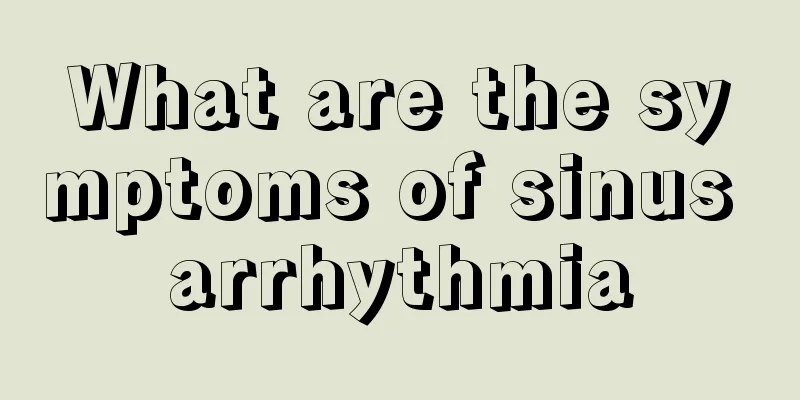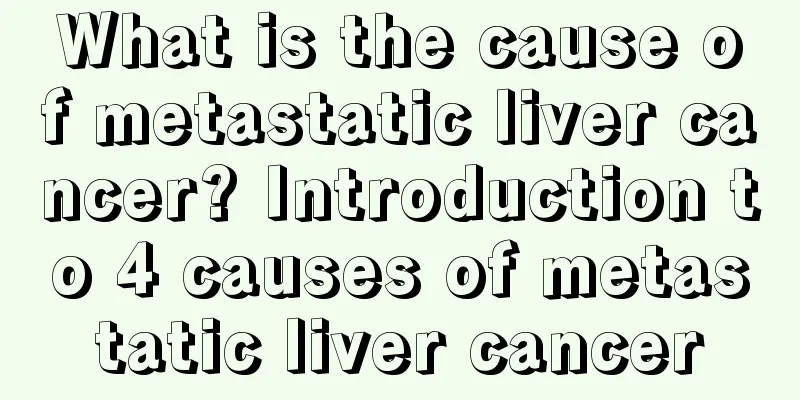What are the symptoms of sinus arrhythmia

|
Many people may not be familiar with sinus arrhythmia, but in fact it is mainly a sinus heartbeat, which can manifest as a fast or slow sinus heart rate and various abnormal problems, and some may also have symptoms of atrial fibrillation. 1. Sinus bradycardia The heartbeat is less than 60 times per minute and the beat is regular. For people who exercise regularly, because exercise enhances heart function, when the heart is at rest, it only needs to beat 40-60 times to maintain normal blood circulation. This is the benefit of exercise. If the heartbeat is less than 30 beats/minute, it usually means that there is conduction abnormality and you need to see a doctor. 2. Ectopic beat, premature beat: An abnormal electric wave is emitted somewhere in the heart, causing the heart to beat an extra beat. If the frequency is not high, the impact is usually not significant. However, if the frequency is high, or more than two consecutive extrasystoles occur together, it can easily cause more serious arrhythmia and affect heart function. 3. Atrial Fibrillation, Atrial Flutter: This type of arrhythmia usually indicates the possibility of latent heart disease, but hyperthyroidism and long-term poor control can also cause this type of arrhythmia. During an attack, the atrial contraction can reach 350 times per minute. Because the contraction speed is too fast, the pump contraction effect is not achieved. The atria are just trembling, and the blood is always idling in the atria. Only gravity can transport the blood in the atria to the ventricles, and then from the ventricles to outside the heart. Therefore, the cardiac output is 25% less than normal. Because the blood stays in the atria for a long time (due to idling), blood clots are likely to form. If the blood clots are unfortunately transported to blood vessels outside the heart, it will cause vascular embolism, cerebral stroke, pulmonary infarction and other complications. 4. Wolf Parkinson-White Syndrome (WPW Syndrome) is a congenital abnormality of the cardiac nervous system. In addition to the normal conduction nerves of the heart, one or more abnormal nerves grow. When the electric waves run to the abnormal nerves, short circuits are likely to occur, causing abnormal neural circuit circulation of electric waves between the atria and ventricles, often causing paroxysmal supraventricular tachycardia with a heart rate of more than 150 beats per minute. In most patients, the abnormal WPW pattern can be seen on the resting electrocardiogram, but the tachycardia will occur irregularly. Fortunately, the chance of death during an attack is not high. |
<<: How is shingles transmitted? Pay attention to these 3 situations
>>: Is dyshidrotic eczema contagious? You should know these things
Recommend
Edema pharyngitis
Edema pharyngitis is a type of water accumulation...
Which department should I go to if I have spots on my face
If you suddenly develop chloasma on your face and...
Why does washing your face with sulfur soap cause a lot of acne?
I believe everyone has seen sulfur soap, which is...
What does it mean to cultivate one's mind and cultivate one's character?
Cultivating the mind and cultivating the characte...
What to do if lips get inflamed
Everyone has experienced getting angry in their l...
How long after surgery for left ovarian teratoma can I get pregnant
Generally, women are advised to wait 6 months to ...
The benefits of daydreaming
The benefits of daydreaming include promoting blo...
What should I do if my armpits often sweat?
With the arrival of summer, many people with body...
Lumbar disc herniation and leg numbness need early treatment
If we do not pay attention to the maintenance of ...
Introducing the main symptoms of testicular cancer
I believe everyone has deeply felt the harm that ...
What's going on when my throat hurts and my ears itch?
If you have a sore throat and itchy ears, you sho...
What to do if you have vomiting due to esophageal cancer
The vomiting symptoms of esophageal cancer patien...
How much does early treatment of colorectal cancer cost
Everyone wants to have a healthy body, but many h...
What is the situation with the white yolk of the egg
Normally, the yolk of an egg is yellow, but for s...
My face suddenly turns red and hot_What's going on when my face gets hot and hot
The skin on the face suddenly becomes red and hot...









